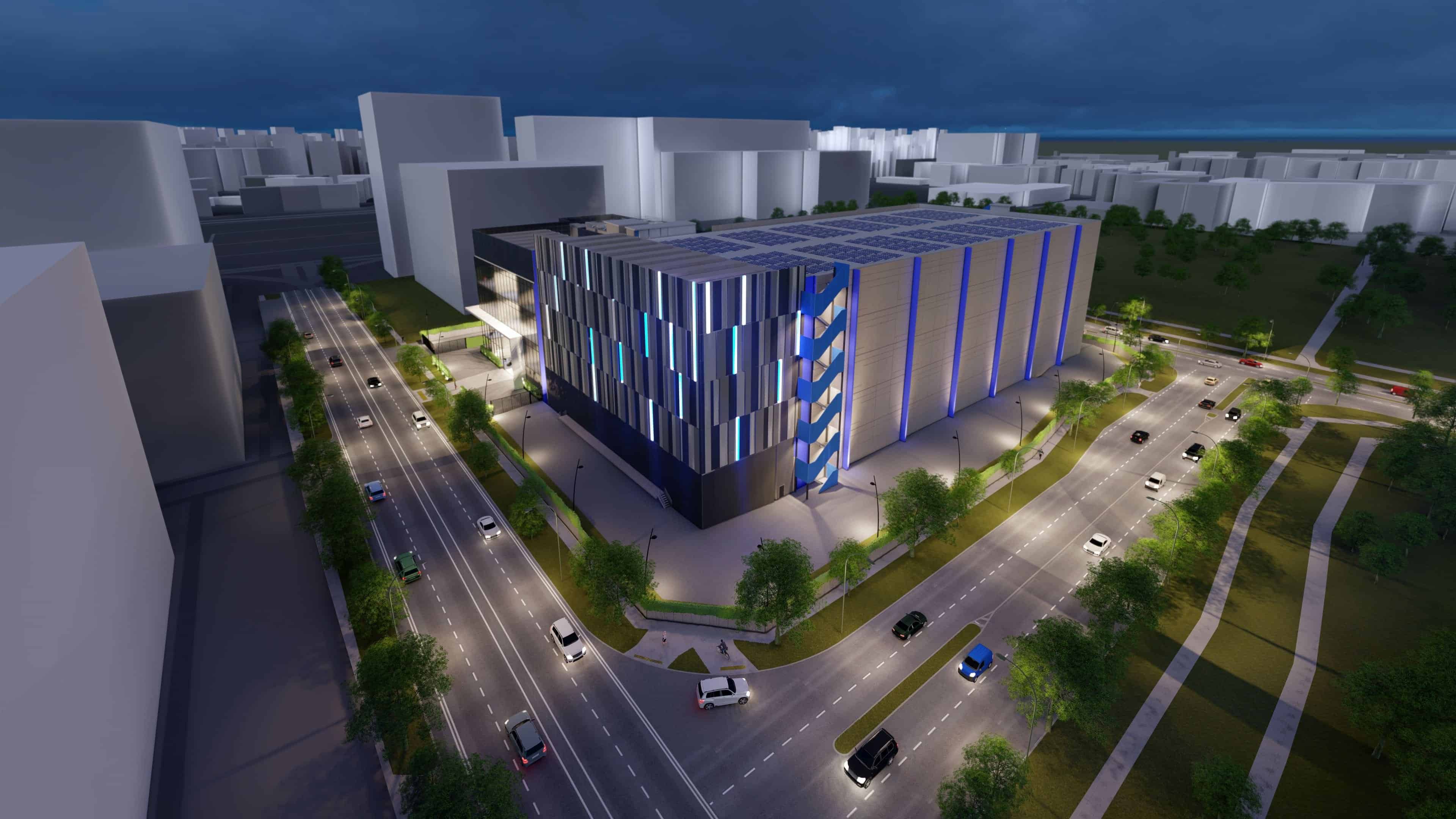We sat down recently with Steve Holt, Partner Marketing at Digital Realty to discuss Digital Realty and industry trends such as cloud, edge computing, and hyperscale data centers.
What’s the background story behind Digital Realty?
Digital Realty has evolved over the past 15 years. In 2004, we completed an IPO offering with 21 properties in North America. As a publicly-traded REIT (Real Estate Investment Trust) we were able to leverage our heritage to acquire land banks for future expansion. Over the past four years, we’ve acquired Telx, Telecity, and more recently Ascenty in Brazil. Our aggressive growth strategy complements our customers ambitions to expand, connect and serve the digital economy in a global marketplace.
How many data centers does Digital Realty have? What markets?
We have over 210 global data centers across 5 continents and 13 countries. One of the benefits our customers see with our global footprint is the ability to expand or enter new markets with ease. With products such as Service Exchange, powered by Megaport, customers can gain access to secure and global clouds in new markets from a single deployment.
We have a significant presence in North America and Europe, and we’ve just recently acquired Ascenty in Brazil, which is one of the largest and most connected data center providers in South America. Within Asia Pacific, we’ve recently announced our expansion efforts in Singapore and Tokyo, which will support the ambitions of our customers.
Who are your typical clients? What’s the average deal size? Why do they select Digital Realty?
With over 2300 customers, the markets they serve, and the size of their businesses vary considerably. We do see an emphasis in key verticals such as Healthcare, Finance, and of course Gaming, IoT, and AI technologies.
Our customers select Digital Realty for a variety of reasons depending on the type and size of deployment. Many of our colocation customers enjoy the ability to establish deployments in a single location, knowing that they can quickly and easily expand into multiple metros while gaining access to our ecosystem of connectivity and cloud partners. We’re seeing larger hyperscale opportunities increasing as XaaS applications continue to expand. Our hyperscale customers work very closely with us to create an expectation for future growth, environmental and sustainability requirements, as well as technical and utility resources that come from the local municipalities. Digital Realty can help all types of customers and deployments reduce cost due to our procurement best-practices and scale, as well as our ability to enter new markets with the resources and expertise they need.
Where do you see data center industry in five years from now? What are the major trends you see?
Data centers generally continue to thrive as the amount of data created, stored, and exchanged continues to grow. Large Hyperscale deployments will see the most growth as more companies leverage cloud-supported architectures. Core infrastructure requirements for both large Enterprises and Service Providers will consolidate around regional epicenters of data center activity, however, edge-placed deployments will flourish as latency reduction becomes critical to serving population bases and IoT applications via mobile and last-mile connections. Unique data sovereignty requirements for different emerging markets will drive many data center providers to expand globally as their largest customers grow their addressable markets. As with any industry, some level of consolidation will occur, driven primarily by the desire to support certain customer profiles. Data Center go to market strategies will need to evolve to position the data center within a customer’s overall workload placement strategy, contemplating the need for on-premise infrastructure and cloud resources, with interconnection of those resources becoming a more essential element of the performance of applications.
Everyone is talking about “edge” data centers and computing? What are your thoughts?
First of all, the “edge” is hard to define generally, since it means different things to different companies that have a say in the matter. Typically, from an inside out point of view, the “edge” is where your own capabilities end, and another service or provider picks things up. For us, we view interconnection-rich carrier hotels and Internet Gateways in close proximity to addressable markets as the Edge from a couple of different perspectives. First, it’s where our customers can peer with multiple networks so that as much of their customer base can reach their services or content from a single hub. Secondly, it’s where the cloud connects with Enterprises, and as a result, customers can connect privately to cloud resources to reduce cost, improve security, and bolster performance. As IoT, 5G, next-generation applications like autonomous driving become more pervasive, moving even closer to addressable markets will become critical, as latency-sensitivity drives workloads even further, to cell towers, CRAN locations, and even Central Offices in legacy telco footprints. That movement, however, will need to be supported by core infrastructure connectivity, as access to massive data lakes becomes essential to the success of those applications.
Cloud versus colocation… Who wins or are they complementary?
There are 3 ways you can address the topic: Cloud vs. Colocation, Cloud, and Colocation, Cloud is Colocation. With respect to Cloud vs. Colocation, there’s no denying the shift experienced by Enterprises from legacy on-premise physical deployments to cloud-supported architectures. For many enterprises, absent any specific compliance needs of their industry, growing their IT environment within the cloud provides the right mix between cost containment, flexibility, and performance. However, as enterprises grow, the value of colocation presents itself as steady-state and high-performing workloads provide cost efficiencies, which leads into the Cloud and Colocation perspective. Enterprises realize that a mix of Cloud and Colocation provides the ideal environment to implement a hybrid multi-cloud strategy, which takes advantage of the different value sets of Cloud and Colocation, with the goal of achieving desired performance results while containing cost. And lastly, and especially for Digital Realty, Cloud is Colocation as we take advantage of the largest Cloud Service Providers placing their core infrastructure on our Connected Campuses. The Cloud actually lives and pulses through our data centers located in strategic locations around the globe, supporting their Core, Edge, and Interconnection requirements which give them the ability to deliver the Cloud-related services to their customers.
What else do people not know about Digital Realty?
It really depends on the audience. If you were to ask the Investor community, you’d realize they are pretty familiar with our 14 consecutive years of dividend increases and $38 Billion Enterprise value as the 8th largest Publicly Traded US REIT in the country. But they wouldn’t understand as much about our innovative approach to solving our customers Core, Edge, Cloud, and Connectivity needs through next-generation designs and on-demand networking capabilities. If you were to ask our customers, they’d realize our deep bench strength in data center expertise and experience the benefit of over 12 years of 5 nines availability across our portfolio, however, based on how they began their relationship with Digital Realty, they might not be as aware of what all the company can offer. For example, customers that came to Digital Realty via the Telx and Telecity acquisitions may not be aware of our ability to support customized Built to Suit requirements available on many acres Digital Realty has land banked for future data center use. Customers that arrived through Digital Realty before those acquisitions, or even via Ascenty in South America, might not be as familiar with our interconnection capabilities within key metros globally, accessing key network, cloud, and partner ecosystems through over 78,000 physical cross connects and growing. And lastly, while the name of the company might imply, we’re overly focused on the real estate, we’re looking to continue our evolution towards becoming a technology-enabling partner for our customers.

